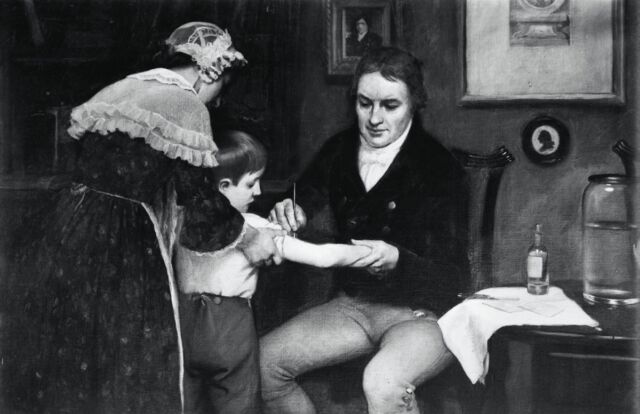Scientists around the world are currently working feverishly to develop an effective vaccine against COVID-19 to curb the global pandemic that has claimed nearly 600,000 human lives worldwide (and counting). Meanwhile, a collaboration between scientists at McMaster University, the University of Sydney, and historians at the Mütter Museum in Philadelphia, are looking to the past for potential clues. They have analyzed the genome of fragments of the smallpox virus used in vaccines during the Civil War, according to a new paper published in the journal Genome Biology.
"Understanding the history, the evolution, and the ways in which these viruses can function as vaccines is hugely important in contemporary times," said evolutionary geneticist Hendrik Poinar, director of the McMaster Ancient DNA Center, of the rationale behind the research. "This work points to the importance of looking at the diversity of these vaccine strains found out in the wild. We don't know how many could provide cross protection from a wide range of viruses, such as flus or coronaviruses."
The World Health Organization declared smallpox to be an eradicated disease in 1979, and many people don't remember just how devastating it could be. It began with a high fever and severe vomiting, followed by a skin rash. The victim would next develop sores, which eventually scabbed over and fell off, scarring the skin. About three in ten of those infected died, and the survivors were typically badly scarred for life, sometimes even blinded or permanently disabled.
The Chinese were inoculating people against smallpox as early as the 1500s. European physicians in the early 18th century relied upon variolation (the use of smallpox to induce immunity) to control the spread of smallpox, in which scrapings from smallpox pustules were scratched into a person's arm or inhaled through the nose. While those who received the treatment did go on to develop common smallpox symptoms like fever and rash, the death toll was significantly lower.

By the late 1700s, a handful of physicians in England and Germany noticed that people infected with the milder cowpox seemed to be immune to smallpox, and there were a couple of early vaccination tests in humans. For instance, in 1774, a farmer in Dorset, England, named Benjamin Jesty, successfully vaccinated his wife and children with cowpox. But it was the English physician Edward Jenner who is credited with bringing the smallpox vaccine into mainstream medical practice.
Jenner, too, had noticed that milkmaids infected with cowpox were largely immune to smallpox. So on May 14, 1796, he scraped the pus from cowpox blisters on the hands of a milkmaid named Sarah Nelmes. (The hide of the cow, Blossom, who gave Nelmes cowpox is displayed in St. George's Medical School library.) Then he inoculated a young boy named James Phipps (the son of his gardener) with the scrapings, resulting in a slight fever, but no full-blown illness. He subsequently exposed the boy several times to variola virus, yet young Phipps never developed smallpox. Jenner tested his method on 23 additional subjects (including his year-old son, Robert), before publishing his findings. By 1840, the British government had banned variolation and was supplying cowpox vaccinations to the general populace, free of charge.
During the American Civil War (1861-1865), smallpox proved to be a scourge that ravaged both Union and Confederate troops. Along with quarantines and burning infected clothing and blankets, soldiers on both sides of the conflict were required to receive smallpox vaccinations to control the spread of the disease. In reality, the requirement was often disregarded in the rush to conscript new soldiers, although it still helped curb deadly outbreaks and led to widespread smallpox vaccination of American civilians after the war ended. Crusts were typically harvested from cowpox scabs from infected children, soldiers, even the cows themselves, and sent to army surgeons. (In one notable instance, a crust was collected from a young woman of disrepute also infected with syphilis, thereby spreading the STD to the soldiers vaccinated with that material.)
According to the authors of this latest study, Philadelphia was the second-largest hospital city servicing the influx of sick and wounded soldiers. The Mütter Museum—a veritable mecca for the morbidly curious—was founded in 1863 to house the various medical artifacts and specimens for research and teaching, including smallpox vaccination kits and related instruments. The latter included folding lancets, small glass plates used for mixing fluids, and tin boxes to hold scab material. The museum supplied five vaccination kits dating to the mid-to-late 19th century for the study. Four kits were of the leather roll-up variety; the fifth contained a tool known as an "automatic vaccinator."

arstechnica
[contfnewc] [contfnewc]







